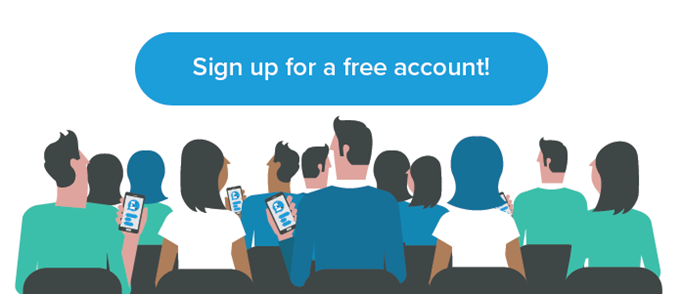As the workforce evolves, companies are tasked with training and developing talent to keep up with their changing needs. Companies understand that they must invest time into training employees if they want a dedicated workforce that has the skills needed to succeed. Different strategies and approaches work for different people at different times in their careers so it's important to create personalised plans for individuals. In this post, we'll explore employee training and development so you can get a deeper understanding of what it is and why it's important. We'll also share some key tactics for effective engagement in order to inspire employees' growth within your organization.
Section 1: Defining Employee Training & Development (ETD)
Section 2: Best engagement strategies for workplace training
1. Definition: What is Employee Training and Development
Employee training and development is any kind of intentional learning that improves an employee's ability to do their job. This can be anything from training in new software to coaching on how to manage people, or even teaching them about your company's mission statement or your values. Employee learning is a subset of employee training and development. It refers specifically to the type of learning that takes place when employees use formalized methods or techniques. Employee development focuses more broadly on all forms of intentional learning that help improve performance including informal activities like mentoring relationships between managers (or peers) and your progression in building stakeholder relationships throughout your industry and company.
2. Best engagement strategies for workplace training
Employee training and development is a key component of employee engagement. An employee learning plan is an essential part of your overall strategy for creating an engaged workforce, but it's not enough to simply create one. You need effective tactics for engaging your team so they actually use the training you provide them with and engage with presentations or content. Here are some ways you can do this:
- Use an online training platform: Online learning platforms are ideal for employee training and development because they allow you to deliver content through a variety of different mediums, including video, audio and text. You can also use them to create interactive quizzes that help employees learn new skills faster than traditional classroom-based training would allow.
- Use blended learning approaches: Blended learning involves combining face-to-face instruction with digital tools like eLearning courses or online simulations that simulate real-world situations. For example, you might use virtual reality headsets (such as Oculus Rift) during your initial orientation process so that new hires can get used to working in their new environment before they even start their first day on the job! Using a blended learning approach encourages employees to do work outside of the class to then discuss it in a live environment when they can share what knowledge they have retained.
- Provide a training achievement timeline. Sharing clear goals for each session or module in your training plan. You don't want employees feeling lost or confused about what they're trying to accomplish by taking part in certain activities; make sure everyone knows the purpose of each module and how it fits into the bigger picture of helping achieve company goals as well.
- Offer incentives for participation (and completion). This could mean offering gift cards, extra time off from work after completing certain modules/training sessions successfully - whatever works best! Just make sure that whatever incentive system works best with your company culture fits within any internal guidelines before putting anything into action.
- Use live polls or quizzes in live training sessions to test knowledge retention. You can also you this approach to gauge current understanding of a topic from your employees.
- Offer different types of techniques for your live training including games, role plays and case studies so you apply any topics to real-life scenarios. By giving key applications of how it can be translated to real-life problems it helps employees to have a better overall understanding.
- Make sure you keep up with current content standards. A lot of people learn nowadays from popular apps on mobiles or through engaging videos or podcasts. If you can ensure that you offer content that is valuable and easily digestable it will help to keep employees engaged throughout the whole program.
3. The importance of employee training programs
If you have engaged employees, they will be more productive, loyal and committed to the company's vision. Employee training and development provides an opportunity for your employees to learn new skills that will help them perform better at work or advance their careers within your organization. It also gives them a sense of accomplishment when they complete a training course successfully. Employee training and development is a key way to improve your company's performance as employees can share learnings and tips as well as put into practice what they have learnt.
Employees need to understand the value of their work and how it contributes to the company's goals, as well as how they can grow as individuals by contributing more effectively at work. A well-rounded training program will engage your employees because it provides them with new skills or knowledge and those new skills translate into greater success for your company. Employee training and development should focus on three key success areas: personal growth (e.g. leadership skills), interpersonal relations (e.g. communication), and technical proficiency (e.g. applying to company processes or technology). All of these areas help with shaping employees for more responsibility and improving their morale to show that they are supported to succeed.
4. How to get started with workplace learning
Before you get started, think about the type of training you want to provide your employees. Are they looking for more in-depth technical skills or do they just need a refresher on the basics? Once you've determined the type of training that fits their needs, it's time to plan out how long it will take and what resources are needed. Evaluate whether or not your training was effective by measuring progress against goals set at the beginning of each session. If an employee isn't improving as much as expected during this time period, consider reviewing ways to improve these sessions based on feedback and offer alternative approaches for learning. As with any learning activity in your organization, it's important that you understand the learning styles of each individual employee so they can be taught effectively. You should also consider the type of workplace learning that will best suit your needs: online courses; seminars; workshops; mentoring programs; experiential learning such as shadowing opportunities.
Review your employee training today...
Employers who want to engage and retain their employees need to consider effective training and development programs that offer the right level of personalisation to an employee. By creating a culture of continuous learning, employers can help employees develop new skills and become more engaged in their work by setting up a career path that will motivate staff. Training programs should be designed with specific goals in mind and offer opportunities for employees to practice their new skills at every step along the way. The perfect way to start this process is to ask employees about their needs, career aims and their passions.





